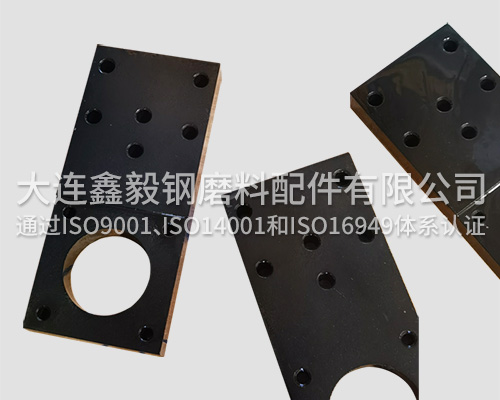Welcome to the official website of Dalian Xinyi steel abrasive parts Co., Ltd!
Dalian Xinyi steel abrasive parts Co., Ltd
Contact: Manager Zhang
Telephone: 0411-39630390
0411-39569620
mobile phone:13795133932
website:en.dlxyg.com.cn
Address: No. 10, Shengsheng Second Road, Dalian Economic and Technological Development Zone
Office worker: Quanshui P3, Ganjingzi District, Dalian
Dalian blackening surface treatment, as an economical, practical, and environmentally friendly metal surface treatment process, plays an important role in industrial production and daily life. Through reasonable process control and material selection, blackening treatment can significantly improve the corrosion resistance, wear resistance, and aesthetic performance of metal parts, providing high-quality metal products for various industries. With the continuous advancement of technology, blackening treatment will undoubtedly show broader application prospects in the future.
Blackening surface treatment, also known as bluing treatment, is a common metal surface treatment process mainly used for corrosion prevention and decoration of steel materials. By chemical or electrochemical methods, a dense oxide film is formed on the surface of a metal, which not only improves its corrosion resistance but also enhances its appearance, giving the metal a deep blue or black luster. Blackening treatment is widely used in fields such as mechanical parts, tools, weapons, and automotive components.
What are the process parameters for blackening surface treatment in Dalian?
solution composition
Sodium hydroxide: provides an alkaline environment, generally at a concentration of around 500-700g/L. It can promote the reaction between metals and oxidants, resulting in a more uniform formation of oxide films.
Sodium nitrite: As an oxidant, its concentration is usually between 150-300g/L, and its function is to oxidize the metal surface into a black oxide film.
Accelerators, such as iron oxide red, are generally added in an amount of 10-30g/L, which can accelerate the oxidation reaction and improve the quality and color of the oxide film.
Processing temperature: The temperature for blackening treatment is generally controlled between 135-145 ℃. Low temperature, slow reaction rate, thin oxide film and uneven color; If the temperature is too high, the oxide film may become loose and prone to detachment.
Processing time: The processing time is usually 15-60 minutes. The time is too short, the thickness of the oxide film is insufficient, and the color is light; If the time is too long, the oxide film will become thicker, but it may affect the adhesion and corrosion resistance of the film. The specific time needs to be determined based on the material, shape, size, and requirements for the oxide film of the parts.
Mixing speed: Proper mixing can evenly mix the solution and improve the consistency of the reaction. The stirring speed is generally controlled between 50-100r/min. Slow stirring and uneven composition of the solution affect the quality of the oxide film; Stirring too quickly may damage the formation of oxide film and result in incomplete film layer.
Pre processing of parts
Oil removal: Oil stains on the surface of parts can hinder the formation of oxide films, so oil removal treatment is necessary first. Organic solvent degreasing, alkaline solution degreasing, or ultrasonic degreasing can be used to ensure that there is no oil residue on the surface of the parts.
Rust removal: If there is rust on the surface of the part, rust removal treatment is required. Common methods include acid pickling and mechanical rust removal. After rust removal, the parts should be thoroughly cleaned to prevent residual acid or impurities from affecting the blackening effect.
The essence of blackening treatment is to generate an oxide film on the surface of the metal, which is mainly composed of iron trioxide (Fe ∝ O ₄). This oxide film has a dense structure that can effectively isolate air and moisture, thereby preventing further oxidation and corrosion of the metal surface. Blackening treatment is usually achieved through the following two methods: chemical blackening: soaking metal parts in an alkaline solution containing oxidants, and generating an oxide film on the surface through chemical reactions. Common oxidants include sodium nitrite, sodium nitrate, etc. Electrochemical blackening: The formation of an oxide film on a metal surface through electrolysis. This method can more accurately control the thickness and uniformity of the oxide film.
Blackening treatment is widely used in surface treatment of various metal parts, including mechanical manufacturing, to improve the corrosion resistance and wear resistance of mechanical parts such as gears, bearings, bolts, etc. Automotive industry: used for surface treatment of automotive components, such as engine parts, chassis parts, etc. Electronic appliances: Used for surface treatment of electronic components, such as connectors, switches, etc. Military equipment: used to improve the corrosion resistance and concealment of military equipment, such as firearms, ammunition, etc.

![]()
Office address: P3 Quanshui District, Ganjingzi District, Dalian
Factory address: No. 10, Shengsheng Second Road, Dalian Economic and Technological Development Zone
Copyright © http://en.dlxyg.com.cn/ 大连鑫毅钢磨料配件有限公司 Specializing inDalian sandblasting,Dalian shot blasting,Dalian blackened surface treatment,Welcome to inquire!
辽ICP备18004327号 Powered by Clouds platform Technical Support:Joint enterprise Era
 | Wechat scan Pay attention to our timely information |